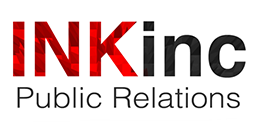Since the beginning of the internet, business owners have been conscientious about how their business ranks up against the competition in appearing in online searches- their SEO. After all, less than 10 percent of users advance to page 2 of a Google search. Many understand that the more links and articles one gets online, the higher the chances are one will end up on the first search page. However, depending on one’s goals and techniques, the first page appearance might not be as elusive as one thinks.
A good way to start is to identify the key words one wants to associate their business with; let us assume “pay for performance pr.” Depending on the type of traffic one wants, one can choose what terms to focus on. For example, focusing on “pay for performance” public relations limits who looks at one’s page to those specifically interested in “pay for performance” as opposed to just “public relations.” It would be safe to infer that those looking for pay for performance public relations are those making business decisions, as opposed to students or just the general populace interested in the broad public relations field.
Once one has identified the keywords that one wants to focus on and “brand” their business as for SEO purposes, then comes the tricky part. Although all types of links do play a role in the chances of one making an appearance higher in the search list, those links that include the key words have a higher weight to them in the Google algorithm. As a result, one would want to have as many stories linking to their website as possible. The holy grail, of course, would be an article that, in this case, has “INK, a pay for performance agency,” as the link to INK’s website.
So, what should the link lead the reader to? Generally, it is not a good idea to link to the homepage of one’s business. Although in this scenario linking to our home page is not a bad idea because we are targeting business owners who are probably interested in the quick overview of INK, other businesses’ target audience may have different interests. As a separate example, consider one who is trying to link the keywords “malware remover” to one’s business. Given the industry, the most newsworthy stories such a business has are usually statistics of infections. Thus, one has to connect such statistics with the fact one is a malware remover. An example of a good link to include would probably be labeled as, “based on Company X’s malware removal statistics.” This link should then send the reader to the statistics itself (usually located in the website’s blog) as opposed to the homepage. This will then help generate more clicks as an interested reader then peruses through the rest of the articles and thus drives up one’s SEO even further.
Admittedly, getting the perfect link is hard. After all, it is the journalists that have the final say on what gets published. However, with a little bit of tact, one can guide the journalist by either presenting a press release or discussing it to increase one’s chances of having a good link. As always, it helps to have realistic expectations.
INK has had years of experience in getting ink, or stories, about clients. However, as one can see, getting placements can have a much wider and longer lasting impact than just increasing publicity.
